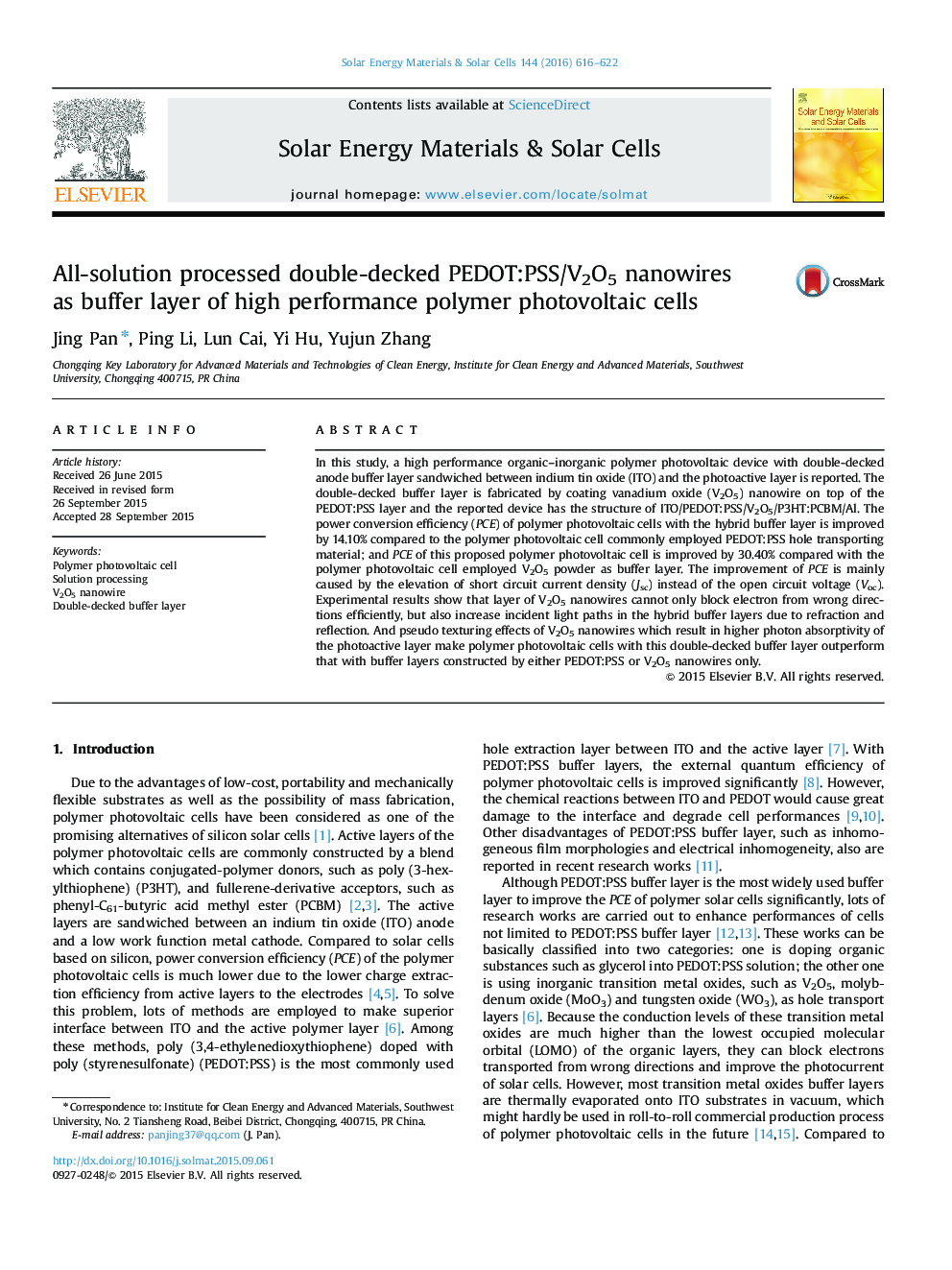| Article ID | Journal | Published Year | Pages | File Type |
|---|---|---|---|---|
| 6534968 | Solar Energy Materials and Solar Cells | 2016 | 7 Pages |
Abstract
In this study, a high performance organic-inorganic polymer photovoltaic device with double-decked anode buffer layer sandwiched between indium tin oxide (ITO) and the photoactive layer is reported. The double-decked buffer layer is fabricated by coating vanadium oxide (V2O5) nanowire on top of the PEDOT:PSS layer and the reported device has the structure of ITO/PEDOT:PSS/V2O5/P3HT:PCBM/Al. The power conversion efficiency (PCE) of polymer photovoltaic cells with the hybrid buffer layer is improved by 14.10% compared to the polymer photovoltaic cell commonly employed PEDOT:PSS hole transporting material; and PCE of this proposed polymer photovoltaic cell is improved by 30.40% compared with the polymer photovoltaic cell employed V2O5 powder as buffer layer. The improvement of PCE is mainly caused by the elevation of short circuit current density (Jsc) instead of the open circuit voltage (Voc). Experimental results show that layer of V2O5 nanowires cannot only block electron from wrong directions efficiently, but also increase incident light paths in the hybrid buffer layers due to refraction and reflection. And pseudo texturing effects of V2O5 nanowires which result in higher photon absorptivity of the photoactive layer make polymer photovoltaic cells with this double-decked buffer layer outperform that with buffer layers constructed by either PEDOT:PSS or V2O5 nanowires only.
Keywords
Related Topics
Physical Sciences and Engineering
Chemical Engineering
Catalysis
Authors
Jing Pan, Ping Li, Lun Cai, Yi Hu, Yujun Zhang,
